You’d think a creature like the dire wolf would have a few more toys to its name. Canis dirus (now reclassified as Aenocyon dirus) is almost unheard of on the prehistoric toy market, even though the genus made its introduction to paleo merchandise over fifty years ago. A contemporary of famous Ice Age beasts such as woolly mammoths and saber-toothed cats, the prehistoric hound is known from ample specimens recovered from the La Brea Tar Pits, and has traditionally been depicted as a bigger & meaner equivalent of the modern-day gray wolf. in a classic trope of prehistoric art and restoration. Given the popularity (and infamy) of dogs and wolves – and stints of minor fame from appearing in the Game of Thrones and Dungeons & Dragons media franchises (known as worgs in the latter) – it seems only natural that a few more toy companies would have tried their hand at the prehistoric pack hunter by now.
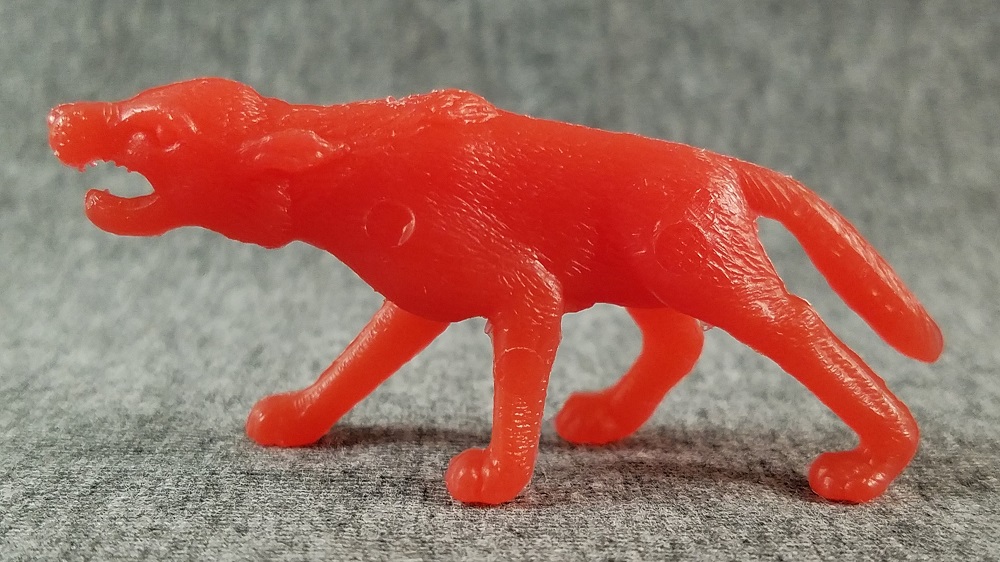
The first dire wolf to be produced in plastic was a small figurine in 1962 from Multiple Products Corporation, better known today as MPC. Although the bulk of MPC’s prehistoric output was blatant copycatting of the older, larger Marx line, a few unique figures did emerge from MPC’s wheelhouse. The dire wolf was one of three new species featured in MPC’s fourth mold group, alongside the rodent Ceratogaulus and an unnamed genus of glyptodont (accompanied by a Marx-copied Struthiomimus). Like all MPC figures, the animal’s name (common name instead of scientific, in this figure’s case) and real-life size (listed as 5’) were engraved on the body for identification, located on both sides of the tail.
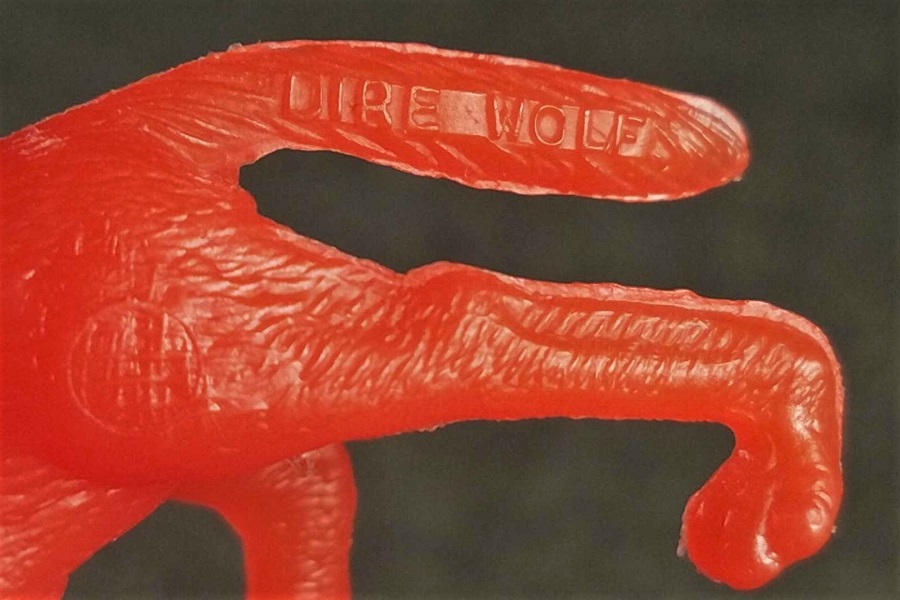
Admittedly, MPC’s dire wolf isn’t the most captivating iteration one might imagine; at 6 cm (2.36 in) long, it’s one of the smallest toys in the MPC line, next to Cynognathus and Ceratogaulus. It’s also not a very robust-looking depiction of the veritable bone-cruncher; the toy is long-legged and lanky, with slender jaws that have an almost cartoonish bent. An additional “mane” of fur coats the neck and shoulder region, but it does little to improve the bulk of the figure. The wolf is posed with ears back, teeth bared, body slanted into attack position; however the effect is one more of a sly opportunist about to to sneak a bite than a strong apex predator ready to subdue its great prey.
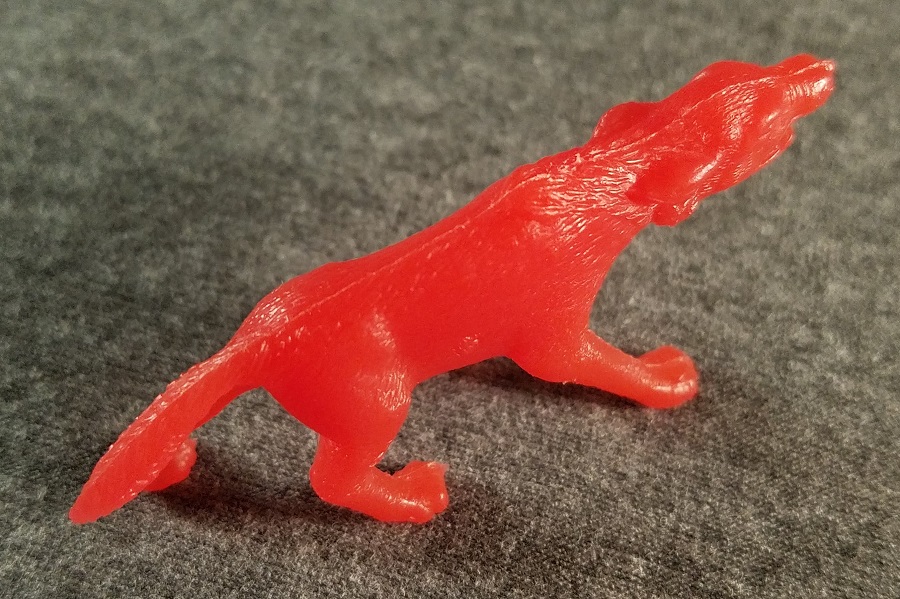
This isn’t to say the toy is poorly crafted, however; an impressive level of detail is achieved on this little figurine. Although the mouth is fixed in an exaggerated snarl, there are actually tiny fangs and teeth sculpted into the jaws. The nostrils, external nares, and even whisker follicles can be observed with careful scrutiny of the snout. Texture of the fur varies across the body, with the mane having a thicker, heavier striation pattern than the fine trim of the main body’s pelt. The paws are a bit cruder-looking, but individual toes can still be distinguished.
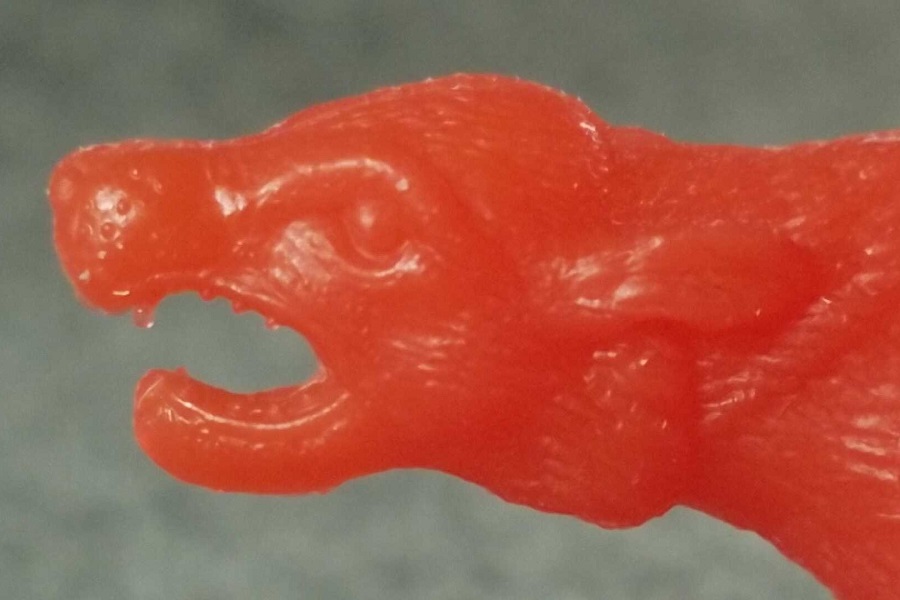
The dire wolf was originally released in solid red plastic, as were the rest of the toys from the same mold group. Green variants were later produced as well, but to my knowledge there were few other variants, if any. The dire wolf seems to have been one of the less-reproduced figures from the overall line; I’d guess its small size and non-dinosaur nature made it a less enticing item than many of its contemporaries. On an amusing note, although none of the MPC toys were aiming for realistic coloration, recent studies from 2021 indicate that dire wolves actually indeed would have borne a reddish fur coat instead of the familiar gray of modern wolves – not THIS chroma of intense cherry-red, of course, but red all the same. Consider it a happy accident, if you like!
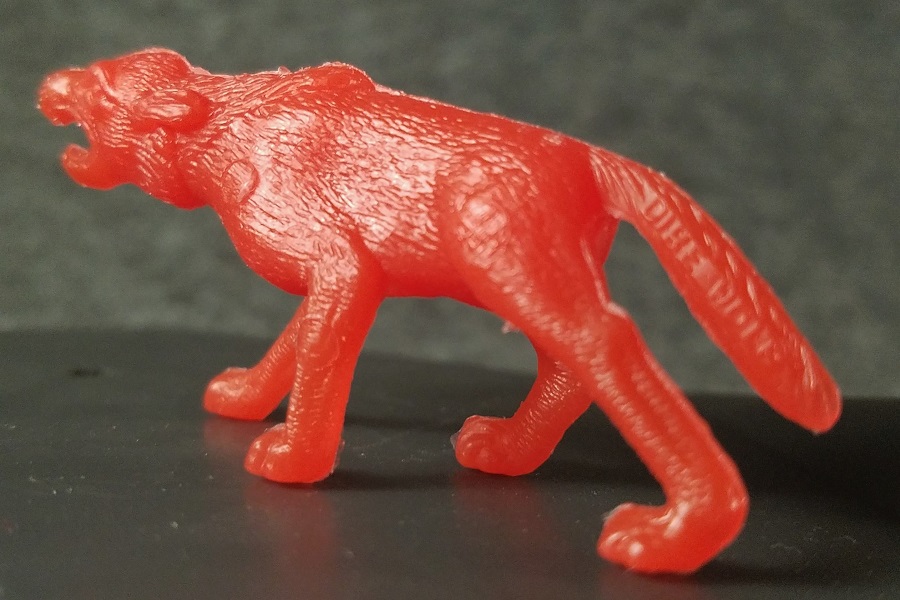
MPC wasn’t the most original producer of prehistoric animal toys in its time, but its dire wolf has surprisingly stood as a rare example of the Ice Age predator in paleo merchandise – albeit a bit of a tame depiction – and for that I think it deserves respect. Perhaps a dire wolf seemed like a surer bet on sales in 1962 than it does today for toy companies, but I can only speculate there; MPC took a small gamble and few have taken the same gamble since. Until more companies consider it for release, MPC’s dire wolf is one of the best (and only) takes on the bone-crunching canid to date. It’s a bit rarer and more expensive than a lot of other MPC figurines, but if you keep an eye on eBay lots and other listings, you can probably find a few for a good price.
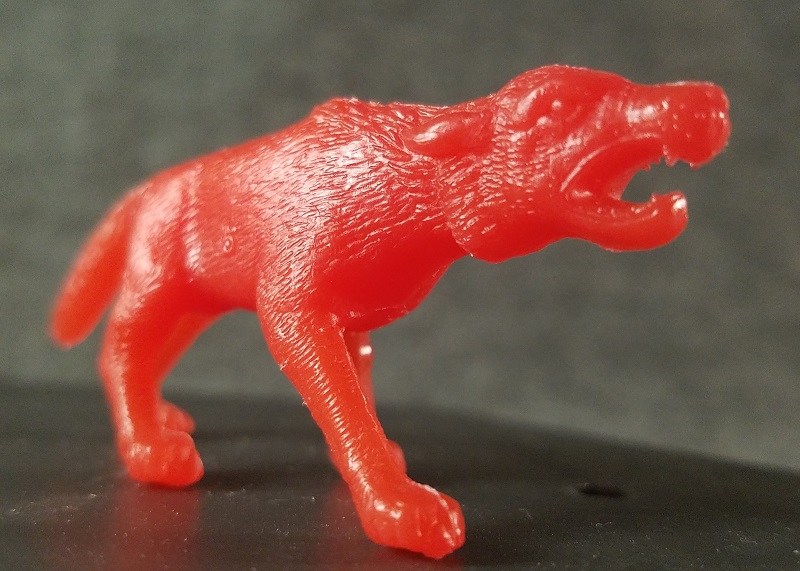
Disclaimer: links to Ebay and Amazon on the DinoToyBlog are affiliate links, so we make a small commission if you use them. Thanks for supporting us!




Great to see another MPC review, I look forward to these.